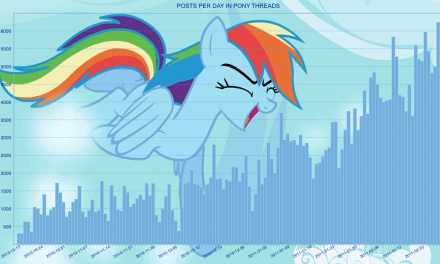It may seem odd to suggest that the second series Bron/Broen (The Bridge 2011-) had a purity of narrative line. This was after all a series that began with a crewless tanker with its hidden plague-ridden cargo drifting into the bridge and ended with a disrupted European summit and the death of a high-security prisoner. In between, we had, among other things, contaminated food in supermarkets, a male gigolo being passed between the women characters, an incestuous voyeur, a case of Münchausen syndrome by proxy and a detective team distracted by personal feelings of attraction, competition and resentment. And that’s to leave out the complications in the private lives of the two main characters, Saga and Martin.

But what carries through the twelve episodes, even as the plots unravel, is the consistency of theme and mise-en-scene and the unwavering focus on the relationship between the two main characters. However bizarre the deaths, the theme of contamination and bodily invasion pervaded them all; the sombre grays, bleached whites and warmer ochres provided the palette of colour; and whatever the twists of the plot, the series was wrapped around the quality of that central relationship. We knew we would get back to that.
As a director, Danny Boyle has had it seems to me a similar purity of narrative line, though differently expressed. You can see it in the openings of Trainspotting (1996) and Slumdog Millionaire (2008) when the key characters literally run with the story, dodging obstacles, jumping over gaps, falling down and getting up again, aiming for the achievement of desire. The editing, the music, the characterization, the script all work to build this sense of purposeful movement and the films never let it (or the viewer) go. Boyle has such a sense of narrative purpose that he was able to bring it to the Olympic opening ceremony, so that for once the music, dancing, costume, lighting did not just create a television spectacular but served to drive on the telling of a story, first about Britain but also about sport.
Boyle’s latest television work, Babylon, was screened recently on Channel 4, a 95 minute feature which has already been re-commissioned for a six part series. It began with a marvelous opening scene in which a heavy-handed police mob break into a house, to be defied, but only briefly, by an outraged man hopping about with his genitals on display. This seemed like a typical Bolyle opening – funny, dramatic and engaging. But after that the programme seemed to fall prey to a rather different approach, the lure of hybridity and mash-up. Babylon was heavily trailed as a comedy drama with a script by Sam Bain and Jess Armstrong (The Peep Show (2003-), Fresh Meat (2011-)). It was meant to be funny but it was also to be a police series which made political points by opening up the (Metropolitan) police for scrutiny. The style combined Boyle’s characteristic quick cuts and heavy beats with a fly on the wall documentary approach familiar from reality tv but also from earlier fictional series like The Cops (1998-2001); this filming style was itself self-referentially parodied in the footage of a one man camera operator who was making a documentary about life with a Territorial Support Group patrol.

The programme draws on a variety of other conventions and stories. There’s office politics worthy of a soap involving a disaffected deputy and various layers of police bureaucracy; there’s a touch of The Thick of It (2005-2012) in the battle for PR supremacy with the Mayor’s office. From Prime Suspect(1991-2006) comes nods at the role of women in the police force and from Scott and Bailey (2011- ) some potential for female solidarity between the new American Head of Communications Liz (Britt Marling) and her experienced PA, Mia (Ella Smith). And there’s a series of bizarre stand-up turns from a policeman who can’t resist playing up to the camera. For a brief moment, at the end, we are put in a room with the man who is being hunted for acts of random shooting and a psychological explanation briefly looms, as it does in the ‘story’ of the policeman who had conned his way back to duty after killing an unarmed suspect. But with so much going on and such a range of styles being deployed it was very hard to hold it together thematically or narratively. The end, as the Chief Commissioner (James Nesbitt) implausibly kissed his shell-shocked Head of Communications after her first day, felt like a desperate attempt to put a lid on this episode and set up a problematic romance to lead us into the future series.
The bagginess of the narrative and the uneven pace and direction was the more noticeable because it was presented to us in one feature-length film and I found myself wishing it had been chopped into three or four episodes which would have given a different timing and structure to its interweaving storylines. I have been watching Brooklyn Nine Nine (2013-) recently, a US sit com set in a police precinct office. The episodes, once the ads are stripped out, are incredibly short and the stories are perfunctory but there’s some good characters, some neat jokes and it stars the incomparable Andre Braugher from Homicide: Life on the Street (1993-1998). One longs for just a bit of this efficiency, this streamlined economy, this savvy about how to make television in Babylon.

But hybridity seems to be the order of the day in British police dramas at the moment. As I write this, I am looking forward to Midsomer Murder’s trip to Copenhagen for its 100th episode. This momentous event is to be celebrated by an unlikely teaming up with DR, the Danish national broadcasting corporation, and Birgitte Hjort Sorensen and Ann Eleonora Jorgensen are among the Danish actors in the cast. If the Danes can make Barnaby and co look stylish, that would be a hybrid feat worth celebrating.

Christine Geraghty is an Honorary Professorial Fellow at the University of Glasgow and an Honorary Research Fellow at Goldsmiths, University of London. Her publications on television include a contribution to the 1981 BFI monograph on Coronation Street; Women and Soap Opera (Polity, 1991); and My Beautiful Laundrette (I B Taurus, 2004). Her BFI TV Classic on Bleak House (2005) will be published in October 2012. Her BFI TV Classic on Bleak House (2005) was published in October 2012. She is on the editorial board of the Journal of British Cinema and Television and sits on the advisory boards of a number of journals, including Screen.





